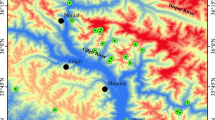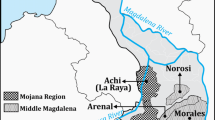Abstract
The amount of Hg used for industrial purposes in Brazil has been estimated as 105 t.yr−1 of which, 50% is released into the environment, As the industries that use this Hg are located in the neighborood of highly populated areas, the number of people exposed to the risk of contamination is high, Severe cases of chronically poisoned workers have been reported most of them presenting neuropsychological disorders, Contamination of air, soil, and water resources are also observed. Analysis of sediments, water and biota of Guanabara Bay. Rio de Janeiro. show contamination of all segments by Hg originating mainly from a chlor-alkali plant located nearby, Higher concentrations of Hg were Bound in the sediments (0,7 to 20 mg.kg−1) where it is associated with organic matter usually under anoxic conditions. Mercury can became bioavailable by organification or by changes in the actual environmental conditions and is thus an important source of environmental contamination of people who consume its biota.
Similar content being viewed by others
References
Associação Brasileira da Industria de Álcalis e Cloro Derivados (ABICLOR): 1993. “O dominio do mercurio pela industria de cloro-soda”.Technical Report, 3 Conferencia Internacional de Grencia de Perdas das Industrias Quimica e Petroquimicas. Salvador. Bahia. Brazil, 11 pages,
Barrocas, P. R.G. and Wasserman, J.C.: 1993.Proc. Int. Symp. Perspect Environ. Geochem. Trop, Countries, 454,
Centro de Pequisas e Desenvolvimento da Bahia (CEPED): 1975, “Impacto ambiental causado pelo lançamento do mercurio no ecossistema marinho”,Technical Report 49 pages. Salvador. Brazil, .
Eysink, G.G.J.: Padua, H.B. and Martins, M.C.: 1988.Ambiente.2 (1), 43.
Fundação Estadual de Engenharia do Meio Ambiente (FEEMA): 1986, “Levantamento dos metais pesados no Estado do Rio de Janeiro”,Technical Report, Rio de Janeiro.
Ferreira, R. C. H. and Appel. L. E.: 1992. “Pontes e Usos do mercurio no Brasil” 2 Ed., CETEM/CNPq, Rio de Janeiro, Brazil.
Ferreira, H.P., Cury, R., Mattos, R., Haickel, S., Barros, L., Barros M., Blandina, M. and Souza, K.R.: 1995,Proc. I Congresso Latino-Americano de Epidemiologia, 225.
Schadow, E., Bergner, D. and Russow, J.: 1991.Chem. Ing. Tech., 63, 668–74.
Zavariz, C. and Glina, D.M.R.: 1993,Reports in Public Health,9 (2), 117.
Author information
Authors and Affiliations
Additional information
Paper presented in the SCOPE Workshop on Role and Distribution of Mercury tin the Environment with Special Emphasis on Tropical Regions. Rio de Janeiro, November 26–28. 1994.
Rights and permissions
About this article
Cite this article
Moreira, J.C., Pivetta, F. Human and environmental contamination by mercury from industrial uses in Brazil. Water Air Soil Pollut 97, 241–246 (1997). https://doi.org/10.1007/BF02407462
Issue Date:
DOI: https://doi.org/10.1007/BF02407462




